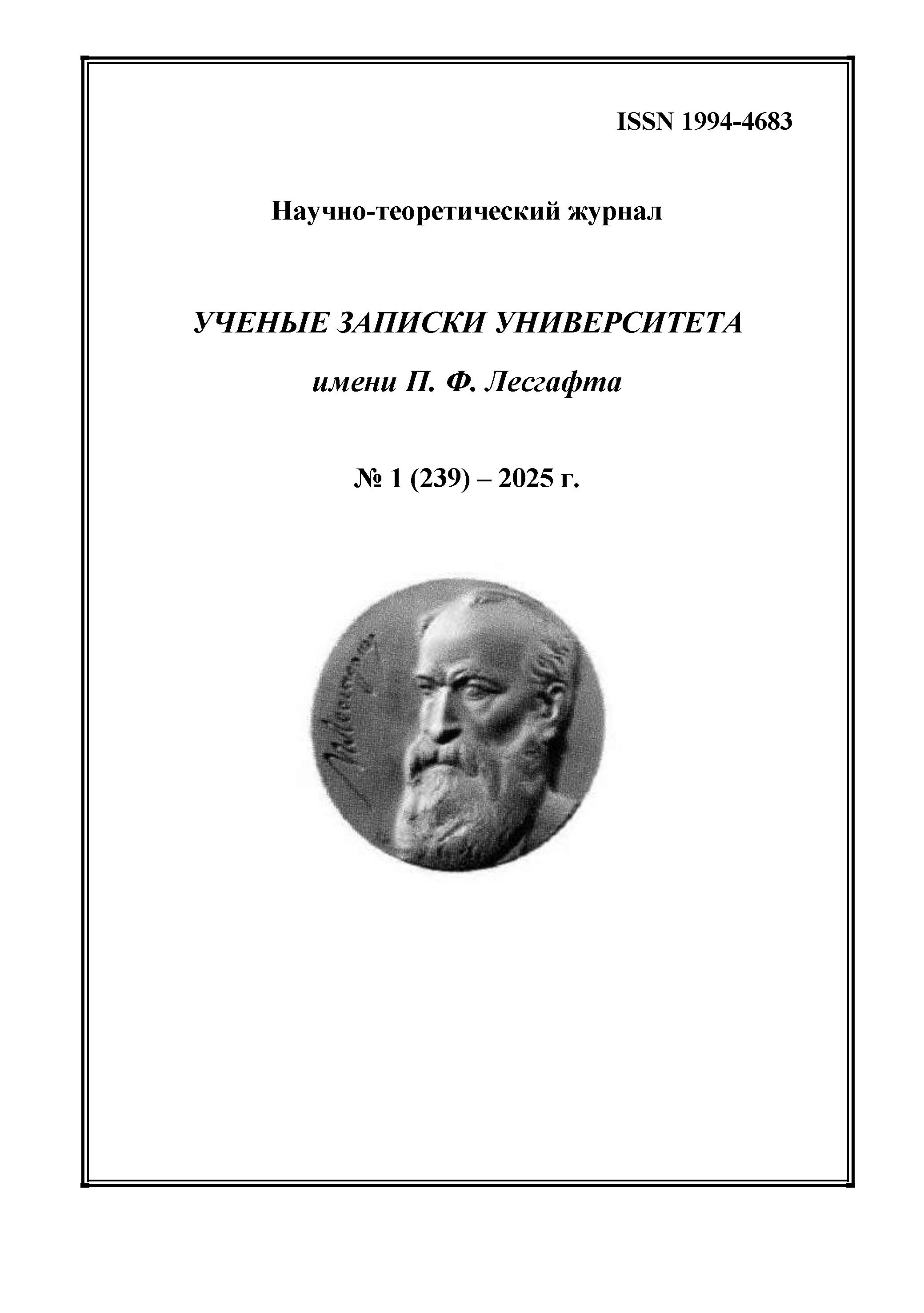employee from 01.01.2011 until now
Prof. V.F. Voino-Yasenetsky Krasnoyarsk State Medical University (Department of Physical Education, Associate Professor)
employee from 01.01.2013 until now
Siberian Law Institute of the Ministry of Internal Affairs of Russia
Krasnoyarsk, Krasnoyarsk, Russian Federation
CSCSTI 77.29
The purpose of the study is to study the impact of four-week judo-specific high-intensity interval training (HIIT) on certain indicators of special physical and competitive preparedness of judo wrestlers. Research methods and organization. Judo wrestlers (Group A) utilized HIIT with a work-to-rest ratio of 2:1. Group B employed HIIT with a ratio of 3:1. Indicators of special physical and competitive readiness were assessed using the SJFT and PotAS evaluation methods. Research results and conclusions. Significant differences were found in the values of SJFT and PotAS in favor of judo wrestlers who used HIIT 2:1. The use of 4-week judo-specific HIIT 2:1 in the training practice of judo athletes may be advisable for improving competitive results in judo.
judo wrestling, training program, interval training, fitness testing
1. Franchini E., Brito C. J., Fukuda D. H., Artioli G. G. (2014), “The physiology of judo-specific training modalities”, Journal of Strength and Conditioning Research, Vol. 28, № 5, pp. 1474–1481.
2. Franchini E., Julio U. F., Panissa V. L. G., Lira F. S., Gerosa-Neto J., Branco B. H. M. (2016), “High-intensity intermittent training positively affects aerobic and anaerobic performance in judo athletes independently of exercise mode”, Frontiers in Physiology, No. 7, 268.
3. Zhang Z., Xie L., Ji H., Chen L., Gao C., He J., Lu M., Yang Q., Sun J., Li D. (2024), “Effects of different work-to-rest ratios of high-intensity interval training on physical performance and physiological responses in male college judo athletes”, Journal of Exercise Science & Fitness, Vol. 22, № 3, pp. 245–253.
4. Magnani Branco B. H., Lopes Silva J. P., Ferreira da Silva Santos J., Ferreira Julio U., Leme Gonçalves Panissa V., Franchini, E. (2017), “Monitoring training during four weeks of three different modes of high-intensity interval training in judo athletes”, Archives of Budo, Vol. 13, pp. 51–62.
5. Osipov A. Y., Guralev V. M., Lyakh V. I., Ratmanskaya T. I., Vapaeva A. V., Kudryavtsev M. D. (2023), “Investigation of effects of short-term strength training interventions on sport performance in elite male judokas”, Journal of Siberian Federal University. Humanities and Social Sciences, Vol. 16, № 2, pp. 274–286.
6. Franchini E., Del Vecchio F. B., Sterkowicz S. (2009), “A special judo fitness test classificatory table”, Archives of Budo, Vol. 5, pp. 127–129.
7. Sterkowicz-Przybycień K., Fukuda D. H., Franchini E. (2019), “Meta-analysis to determine normative values for the special judo fitness test in male athletes: 20+ years of sport-specific data and the lasting legacy of Stanisław Sterkowicz”, Sports, Vol. 7, No 8, p. 194.
8. Prieske O., Chaabene H., Gäbler M., Herz M., Helm N., Markov A., Granacher U. (2020), “Seasonal changes in anthropometry, body composition, and physical fitness and the relationships with sporting success in young sub-elite judo athletes: An exploratory study”, International Journal of Environmental Research and Public Health, Vol. 17, No. 19, 7169.









